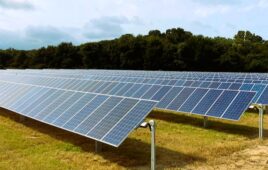PV Evolution Labs (PVEL), an independent test lab for the global downstream solar industry, published its first PV Inverter Scorecard this week. It is the only publicly available report that names the solar inverter manufacturers with the best results following independent, rigorous reliability and performance tests.
While strong performance by some manufacturers confirms their attention to quality, PVEL’s Scorecard also highlights significant inverter safety and performance issues:
- One-third of products tested failed Arc Fault Testing, which evaluates an inverter’s ability to detect events that could lead to fires and explosions due to unsafe electrical conditions.
- Over 20% of products tested failed Damp Heat and Humidity Freeze tests, indicating susceptibility to early lifetime failure from degradation in common field conditions such as rain and snow.
- All tested products, including those that failed, were certified by IEC and/or UL.
PVEL’s findings are aligned with independent studies that demonstrate inverters are the leading cause of maintenance calls in PV power plants and that manufacturers can underestimate annual maintenance expenses by more than 500%.
“The profitability of solar PV projects depends on inverter reliability,” said Jenya Meydbray, CEO of PVEL. “When inverters fail, financial losses from reduced energy yield are compounded by ballooning maintenance costs – and even successful warranty claims do not fully compensate asset owners.”
The Scorecard summarizes test reports from the PVEL Inverter Product Qualification Program (PQP), a unique program established by PVEL in 2014 in partnership with its network of downstream project developers, financiers and other industry stakeholders. PVEL partners can receive complimentary copies of PQP reports.
“We’ve seen a lot of variation in inverter performance by manufacturer and product type. We rely on the PVEL Inverter PQP to identify the products that are likely to meet our performance and durability expectations,” commented Paul Rybak, director of capital procurement with Pattern Energy.
“We hope our first PV Inverter Scorecard proves as valuable to the downstream solar industry as our widely recognized PV Module Reliability Scorecards,” said Tara Doyle, chief commercial officer of PVEL. “As one of the first labs to test extended inverter reliability and performance specifically for the downstream market, we are pleased to lead the effort in sharing important best practices with the broader industry.”
The 2019 PV Inverter Scorecard is available as a free download at www.pvel.com/inverter-scorecard.
News item from PVEL




Arc Fault is probably one of the most difficult to diagnose problems in the industry. It affects every inverter. What most do not realize is that the majority of what are considered “false” arc faults are not. Because the arc fault is a latched alarm, meaning that it does not clear after a power cycle, and most inverters are now DC powered, a single alarm will continue to “occur” every single day after it has been latched. Suppose an alarm occurs in noon on day one and is not cleared. The inverter goes to sleep that night, wakes up the next morning, goes through self test detects an art fault was latched from the previous day and then it sends out another alarm. It will continue to do this until that alarm is physically cleared by technician on site. So when people say that 98% of the alarms are false, that is not accurate, it is the same alarm being resent every morniing.
Sounds to me like the manufacturers are trying to cut the user out of the loop. Auto manufacturers did this much the same way with the check engine light on the dash board. For intance, leaving a gas cap loose would turn on the check engine light. Once the gas cap was tightened correctly, the check engine light would still indicate a problem, until a special piece of equipment was purchased to turn the light off.
Although I still use APsystems micro inverters, I had 6 of their 600 series ones not work at all. These were brand new– right out of the box. After they were installed, we were able to convince the tech department, via their monitoring system, of the problem. They sent out 6 more which we installed. They are working fine. However, I ate a $200 cost for having my installer go out to reinstall them. And because the time listed in our contract had passed for the whole installation to have been up and running, the homeowner refused to pay me his final payment of $500. So, that problem cost me, the solar system company owner a total of $700.
One of the problems of finding or fixing Arc Fault errors is a complete and total lack of tools to test for or track down or data log Arc Fault errors.
“One-third of products tested failed Arc Fault Testing, which evaluates an inverter’s ability to detect”
Arc Fault false errors are a major problem across all brands for every 100 reported errors maybe 2 are real. So the results are a reduction of safety because every one just resets and leaves. The only time any tech works on finding one is if you get one 3 times in less than a week.